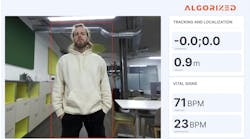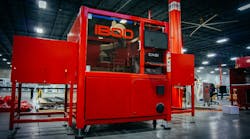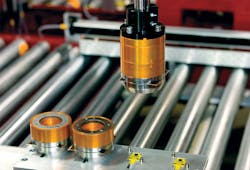Accidents in the workplace can be caused by several factors. However, some industries are more prone to accidents than others. Warehousing is a prime example of this. Managers of warehouses make every effort to reduce the number of major accidents, such as pallet-rack collapses, and forklift collisions. However, they know it is equally important to also reduce the causes of minor injuries.
One type of minor accident, cuts and lacerations, is prevalent in warehouses, owing to the cutting tools used to open cartons and remove packaging. In a bid to reduce the likelihood of these accidents occurring and improve the health and safety for its workers, Ralawise explored ways it to limit the use of knives on its warehouse floors without reducing throughput.
Ralawise is a large-scale apparel distributor, holding more than 16 million items of stock made up of 114,000 products from 182 brands. From its warehousing, the company daily processes an average of 3,000 cartons that are often secured with nylon branding and wrapped with several layers of stretch film. To process these cartons a team of workers cut, unwrap, and unpack these boxes quickly, before moving them to the next stage of the distribution process.
Steps had already been taken to enhance the safety of workers, including switching to high-quality utility knives with retractable blades. However, even with well-trained workers, using a blade manually always entails a risk of injury.
The IBOD box opener has an optional blade changer that senses blade life, then replaces them when that life is over.
To cut boxes, you cannot remove knives from the equation, so Ralawise began investigating ways to remove humans by searching for an automated way to open boxes. Unfortunately, box-opening robots are not as common as the more traditional six-axis or SCARA robots. So Ralawise approached TM Robotics, a European distributor of industrial robots. It suggested the Intelligent Box Opening Device (IBOD), the only patented automated box opener on the market.
The IBOD is a pass-through box opener designed and built by CASI, a specialist machine builder of automated machinery for order fulfilment processes. Using built-in intelligence, IBOD takes readings from photo optics and linear displacement sensors to measures the dimensions of each box before positioning it for cutting. Software-controlled automation lets IBOS cut boxes according to precise specifications defined by users. As the machine uses a conveyor for self-feeding and self-aligning, it does not need an operator to adjust boxes or blades.
“Improving health and safety was a key priority when searching for a box opening robot,” explains Gary Clibery, facilities and projects manager at Ralawise. “However, having seen the machine in action when visiting CASI, we soon realized the investment could provide a significant boost in productivity, quality, and throughput in this part of the operation.
“One of the unexpected advantages was the reduction in damage to products,” Clibery continues. “Aside from accidents and injuries, manual box cutting also runs the risk of damaging a carton’s contents, rendering the goods unsalable. Due to the automated nature of the machine, boxes are opened in a precise and controlled manner, reducing the possibility of accidental damage.”
Since the installation of the IBOD at Ralawise, it has cut open 135,000 boxes. Only one box suffered from damaged contents, a considerable reduction compared to the damage caused by manual box opening. The company further benefitted from increased productivity due to IBIOD’s speed. The automation also meant staff could work on more complex tasks rather than simply opening boxes. In addition, IBOD can be equipped with an automatic blade changer that minimizes downtime to change dull blades. The IBOD’s blade wear monitor tracks the life of the blades and changes the cartridge within seconds when they reach the end of their operational life.
Automated case extraction is another one of IBOD’s labor-saving features. This add-on module removes the lids from cartons and empties the case contents into bins, or onto a separate conveyor. This eliminates the build-up of waste in the workspace, freeing workers to focus on other tasks.
Automating can significantly reduce the likelihood of accidents in all industries. Although large-scale health and safety in warehousing is often accounted for, seemingly small accidents can often cause the most significant damage, such as long-term injuries, reduced morale from employees, and compensation claims.
Minimizing the possibility of cuts and lacerations provides the obvious advantage of improving safety for workers, but as Ralawise saw, automating these tasks can also reap productivity rewards.












